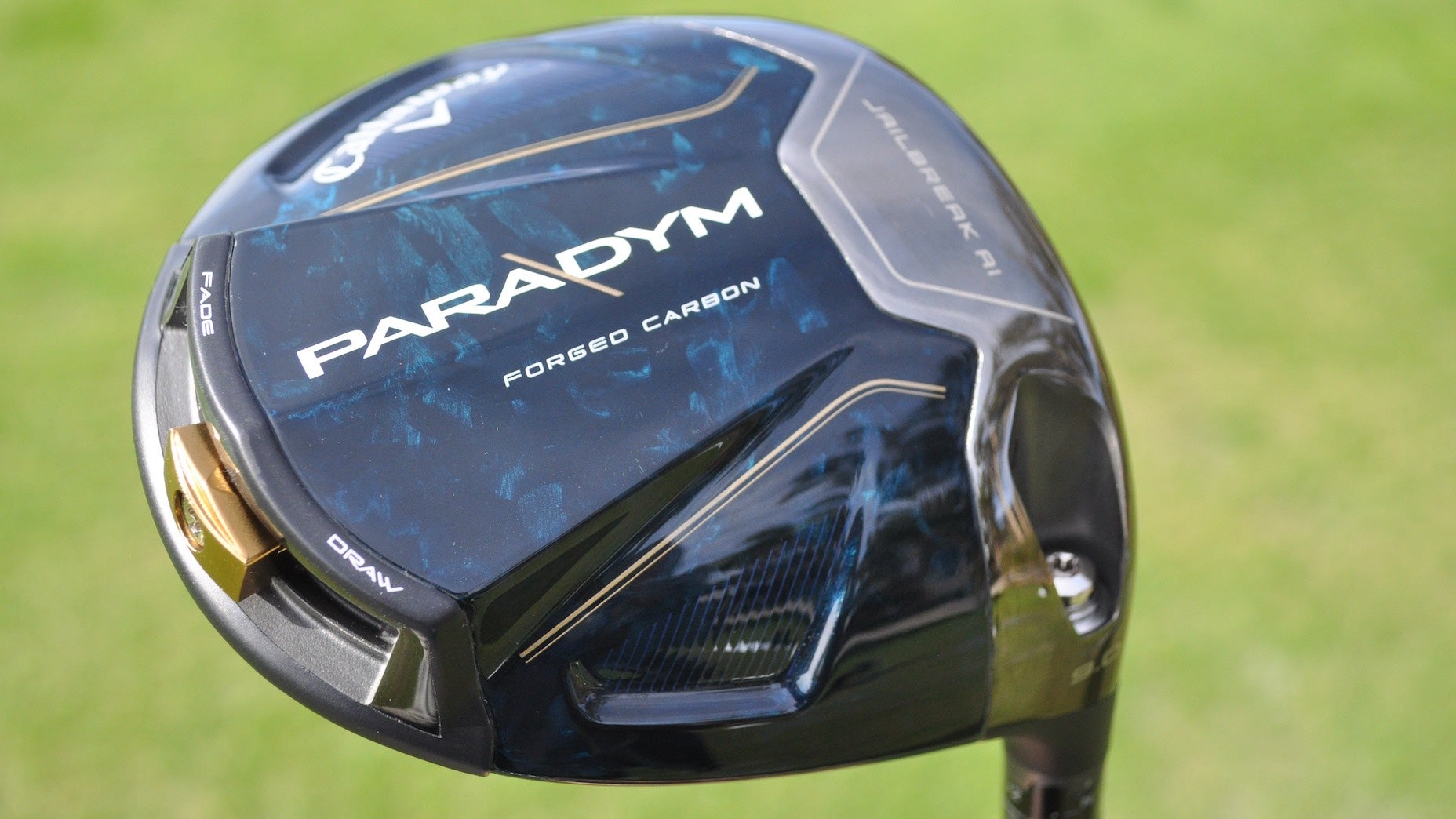For the 2023 edition of GOLF’s ClubTest, we once again teamed up with Golf Laboratories for robotic driver testing. With the help of their swing robot, we’re able to get a better picture of how each driver performs at the same speed (95 mph), delivery and attack angle in a 9-point face mapping test. The result is an unbiased (and extremely detailed) look at where each driver model excels.
Here are robotic insights on Callaway’s all-new Paradym, Paradym X and Paradym Triple Diamond drivers. The Paradym line will be available in retail stores on Feb. 24, 2023. Pick up all your new gear at Fairway Jockey.
1. Toe shots
For weekend golfers who routinely impact the toe (a common mishit location), the Paradym and Paradym X provide the necessary gear effect to keep the ball in play. According to Golf Laboratories founder Gene Parente, that hasn’t always been the case with Callaway drivers in recent years.
“Over the last 10 years, toe shots didn’t have a lot of gear effect,” Parente said. “Toe shots stayed to the right, and heel shots came back. This is the first year I saw a really forgiving dispersion pattern on the Paradym and Paradym X.”
Golfers should expect toe shots to curve back to the left (for a right-handed player), resulting in a tighter overall dispersion. The Paradym X, in particular, had one of the tightest overall dispersions of any driver we tested. The result is a club that minimizes big misses.
Without a draw-biased product in the lineup, we feel comfortable saying the Paradym and Paradym X both have a slight draw shape this year, if that’s something you need.
2. X marks the spot
Speaking of the Paradym X, it was one of only five drivers we tested with a single-digit carry distance loss (6.6 yards) — a statistic that looks at the carry delta between center strike and the other eight locations (average) we tested on the face. For golfers who struggle with inconsistent contact, the X provides an abundance of ball speed retention.
Even better? All three toe and heel locations produced an average carry distance delta of just 6 yards. To put that number into perspective, some drivers we tested had carry deltas between 10-15 yards across the heel and toe impact locations. It’s an impressive improvement from Callaway.
3. Lower spin
Compared to the previous Rogue ST line, the Paradym and Paradym X produced, on average, 200 RPMs less spin at 95 mph. A reduction in spin can lead to more carry distance, provided the spin rate isn’t consistently sub-2,000 RPMs. For Paradym Triple Diamond, the spin reduction, when compared to Rogue ST Triple Diamond, was roughly 100 RPMs.
Callaway Paradym Triple Diamond Custom Driver
MORE FROM OUR 2023 CLUBTEST COVERAGE: The tech behind Callaway Paradym drivers/woods | The tech behind Callaway Paradym irons | WATCH: Callaway Paradym robot testing insights | WATCH: Inside a Callaway Paradym irons fitting | WATCH: Inside a Callaway Paradym driver fitting
4. More speed
Across all three Paradym models, ball speed increased by 1 mph (an average of all 9 face points), which generally equates to an extra 3 yards. Noticeable ball speed improvements are always difficult to achieve from one year to the next, but Callaway somehow managed to squeeze an extra 1 mph out of the AI-designed clubs.
“That speed could be associated with the fact that we had lower spin,” Parente said. “In effect, the energy transfer could be attributing to that additional speed we saw during testing.”
Want to overhaul your bag for 2023? Find a fitting location near you at GOLF’s affiliate company True Spec Golf.
